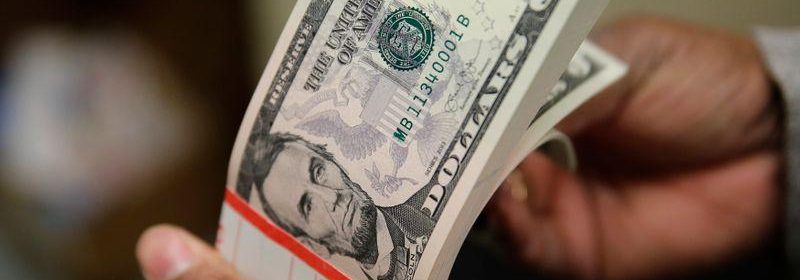Dollar firms as traders brace for U.S. inflation gauge

SINGAPORE (Reuters) – The dollar found support on Thursday from emerging views the Federal Reserve is slowly but surely edging towards a discussion about tightening monetary policy, and as traders await crucial U.S. inflation data this week.
In a market heavily short dollars, the mere suggestion of tapering is enough to temper further selling and against the euro and the yen the dollar held late Wednesday gains early in the Thursday Asia session.
The euro traded at $1.2185 and the yen at a one-week low of 109.20 per dollar. Sterling also dipped to a week-low of $1.4150.
Dollar strength also clipped the wings of the kiwi and it bought $0.7275 after hints of a 2022 rate hike by the Reserve Bank of New Zealand pushed it as high as $0.7316 on Wednesday. The Australian dollar dipped to $0.7732.
Fed officials have this week downplayed immediate concerns about inflation prompting a knee-jerk policy response. But they – and notably influential vice chair Richard Clarida – have made a subtle shift in tone by acknowledging that the time to talk about policy changes might be approaching.
“That’s probably behind the USD strength we’re seeing at the moment,” said Commonwealth Bank of Australia currency strategist Kim Mundy on the phone from Sydney.
“The PCE deflator will be even more closely watched,” she added, referring to the personal consumption expenditures index which is the Fed’s preferred inflation gauge.
“The fact that we’re expecting to see quite a strong jump in headline inflation might just reinforce market expectations that maybe the Fed is on track to introduce tapering later this year.”
U.S. yields rose overnight, with the benchmark 10-year Treasury yield up 1.7 basis points to 1.5808%. [US/]The U.S. dollar index followed suit and lifted 0.4% on Wednesday, holding there on Thursday at 90.076.
Economists expect core PCE prices to jump 2.9% year-on-year in April, compared with a year-on-year rise of 1.8% a month earlier. The data is published on Friday.
WAIT-AND-SEE
The latest fretting about inflation was triggered when data in mid-May showed April U.S. CPI running at an annual clip of 4.2% – juiced by the low base of the pandemic year, but still well above forecasts for 3.6%.
It has given dollar bears pause for thought, stalling a downtrend in the dollar index and hemming most majors into ranges while the world awaits more data to learn whether the lift is transitory.
According to RBC Capital markets, the yen, which is sensitive to U.S. rates movements and began the year tumbling as yields leapt, has spent May in its tightest range since December 2019 and, excepting that month, its tightest range in 45 years.
The kiwi has given the most recent sign of life, and flight, by jumping 0.8% on Wednesday after the central bank reinstated its rates outlook and projected rates rising from 0.25% currently to 0.49% by September 2022 and to 1.78% by June 2024.
That briefly vaulted the kiwi above 73 cents and has made it the fourth-best performing G10 currency this year with a year-to-date gain of 1.3% on the dollar.
The top performers are the Canadian dollar, with a 5% gain fuelled by oil price rises and a similarly hawkish central bank, and sterling, which is up 3.2% as Britain’s vaccination drive rekindles its economy.
The Norwegian crown has also benefited from oil prices and a hawkish central bank and is up 2.4% for the year so far.
U.S. GDP and preliminary prices data is due at 1230 GMT, along with initial jobless claims, where a small decline is forecast. The Fed’s preferred core inflation guide is due on Friday.
Source: Read Full Article
